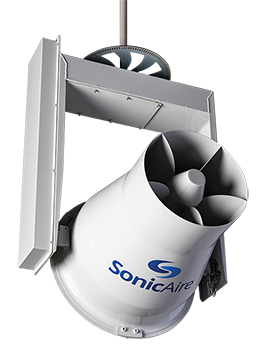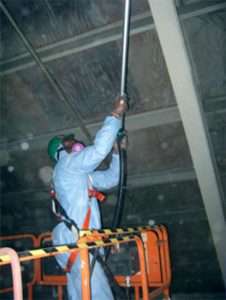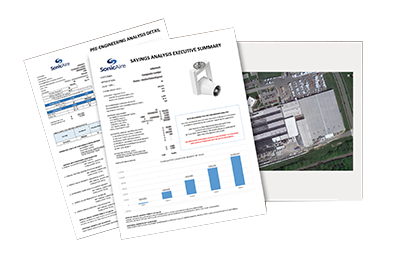Heightened standards for industrial dust control and news coverage of combustible dust incidents have increased the awareness of industrial dust hazards. Yet, some common misconceptions regarding this key safety issue continue to circulate.
 These misconceptions can cause facility managers to make critical mistakes with their industrial dust control procedures. Following are five of the most common.
These misconceptions can cause facility managers to make critical mistakes with their industrial dust control procedures. Following are five of the most common.
- Out of Sight, Out of Mind
This adage often refers to people or objects, and it can apply to industrial dust as well. If dust is located in out-of-the-way areas, the issue of combustible dust hazards can drop off your radar. And this can prove disastrous. The mistake some facility managers make is to assume that the dust is not a problem because they can’t see it.“It’s out of sight, so it doesn’t affect my operations or employees.”This couldn’t be further from the truth.Similar to that is the assumption, “It can’t happen here.” Lack of hazard awareness can contribute to how employees react when they observe dust.In fact, this dust is often located in spaces that aren’t readily visible. This is part of what makes it so dangerous. The industrial dust builds up without notice and becomes a potential hazard. Then, without warning, it can contribute to a combustible dust explosion or fire, which can spread to all areas of the facility. - Manual Methods Are Sufficient
 Manual housekeeping measures may prove helpful to maintaining plant safety. Typically, however, they not enough to properly maintain a safe environment. They also involve risks that can be dramatically underestimated when facility owners calculate the cost of cleaning efforts.
First, manual methods can put workers at risk. Accessing hard-to-reach areas may require climbing to dangerous heights and using complex harnesses or unfamiliar machinery. If injuries occur during manual cleaning, the company could face litigation. Lawsuits are also possible if the manual methods are ineffective and an explosion causes injuries or deaths.Second, manual housekeeping methods require significant investment of resources. Not only do facility owners have to allocate budget to cleaning supplies, equipment and personnel, but they may also suffer from lost production if downtime for cleaning is required beyond normal shutdowns. All of this adds up to significantly more cost and risk than many business owners realize.Finally, some manual cleaning methods may cause a dust issue to become worse than it already is. For example, using compressed air or steam to clean surfaces can risk shifting dust to other areas of the facility. According to OSHA, “if compressed air or steam must be used, it is vital to first ensure that potential ignition sources in the vicinity are eliminated and apply the air or steam only under low pressure to avoid disbursing clouds of dust to other areas.”
Manual housekeeping measures may prove helpful to maintaining plant safety. Typically, however, they not enough to properly maintain a safe environment. They also involve risks that can be dramatically underestimated when facility owners calculate the cost of cleaning efforts.
First, manual methods can put workers at risk. Accessing hard-to-reach areas may require climbing to dangerous heights and using complex harnesses or unfamiliar machinery. If injuries occur during manual cleaning, the company could face litigation. Lawsuits are also possible if the manual methods are ineffective and an explosion causes injuries or deaths.Second, manual housekeeping methods require significant investment of resources. Not only do facility owners have to allocate budget to cleaning supplies, equipment and personnel, but they may also suffer from lost production if downtime for cleaning is required beyond normal shutdowns. All of this adds up to significantly more cost and risk than many business owners realize.Finally, some manual cleaning methods may cause a dust issue to become worse than it already is. For example, using compressed air or steam to clean surfaces can risk shifting dust to other areas of the facility. According to OSHA, “if compressed air or steam must be used, it is vital to first ensure that potential ignition sources in the vicinity are eliminated and apply the air or steam only under low pressure to avoid disbursing clouds of dust to other areas.” - We Don’t Make Very Much Dust
“I’m not making that much dust. I’m sure we could pass any inspection.” Making this assumption is a mistake—and it can be a costly one. You might be surprised how little dust can warrant OSHA action. This agency adheres to standards set by the National Fire Protection Agency (NFPA). According to the NFPA, an accumulation of as little as 1/32” of dust can be hazardous. That’s the thickness of a single paper clip.It’s also important to consider the variability of industrial dust. OSHA reports that two dusts made of the same material can pose different risks for ignition and explosion based on their shape, size and moisture content. Additionally, these dust traits can shift during processing and manufacturing. The result: dust that you thought was minimal or benign could be dangerous after all.
If OSHA determines you are in violation, you could pay a hefty price. OSHA penalties range from $5,000 to $70,000 per violation. Case in point: In August 2019, OSHA listed combustible dust among the safety and health hazards present at a manufacturer of electronic enclosures. The company now faces $161,020 in penalties. - OSHA Won’t Notice
A second OSHA-related mistake is to assume this agency will not inspect your facility. While some locations may be more likely than others to undergo inspection, it is not wise to assume an agent will never arrive on your doorstep. In 2017, OSHA conducted 476 inspections related to combustible dust. These resulted in 319 citations. How likely are you to be among these numbers in the future? OSHA prioritizes by hazard level. Imminent danger situations top the list, followed by reported injuries and illnesses, worker complaints, referrals from other agencies, and, lastly, specific high-hazard industries.Your facility might not fit the bill for imminent danger, but if OSHA receives any complaint or notice about the condition of your facility, an inspection could be imminent. And even if combustible dust issues don’t instigate the inspection, if they are discovered during the process, you could face penalties. - Dust Collectors Will Do the Trick
As with manual housekeeping measures, dust collectors play an important role in industrial dust control, but they are not 100% effective. These devices can miss some of machine- and floor-level dust as well as airborne dust that then settles and accumulates in overhead areas. One Pennsylvania-based wood pellet manufacturer’s findings demonstrate the significance of this less-than-perfect system. The operations manager reports, “Even if we contained 99.99% of the dry dust going into the pellet mill, that would still lead to over 130 pounds of dry dust becoming airborne per week from each pellet mill.”With this much dust accumulation possible, additional methods are necessary to reduce the risk of combustible dust events.
Make No Mistake
Industrial dust control fans offer a proactive solution that circumvents these mistakes. As the global leader in dust control, SonicAire can partner with you to recommend the ideal fan system for your facility. Your customized solution can mitigate risk and help you maintain a cleaner, safer work environment.
To start reaping the benefits of engineered industrial dust control systems, contact SonicAire for your personally engineered solution and quote

 It’s also important to consider the variability of industrial dust.
It’s also important to consider the variability of industrial dust. 